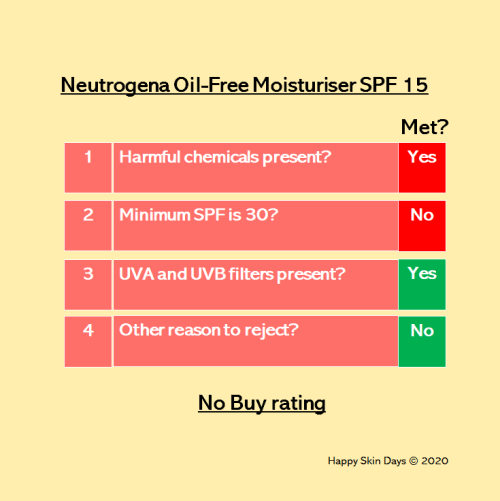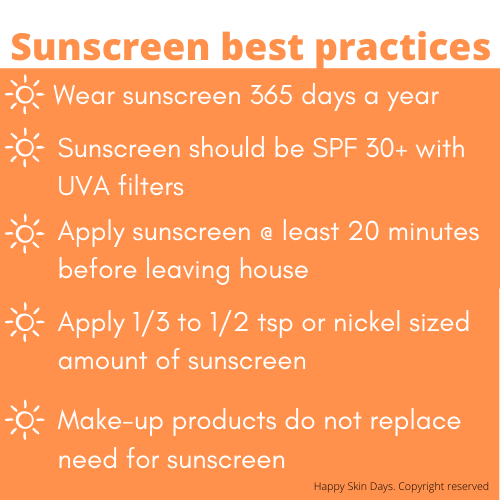Introduction
I completely understand the appeal of this product and why its on Nykaa’s bestselling sunscreens. If you have acne find a non-comedogenic sunscreen at such an affordable price (Rs 499 for 116 ml at 30 April 2020) is next to impossible.
I get it.
However, that does not absolve Neutrogena from making crap sunscreens…and please be in no doubt, Neutrogena does make better sunscreens at affordable prices.
If you are completely happy with the product you have and don’t care about the harmful chemicals or the fact that it doesn’t actually provide you with decent sunscreen protection, then I am pretty sure nothing I write will change your mind.
However, if I have sown some seeds of doubt in your mind, please do continue reading.
I am convinced there are better oil-free sunscreens out there and I will help you find them.
****
Sunscreen test

This is a first: so few sunscreens fail so miserably at this test.
Harmful chemicals present are…
…Oxybenzone and parabens.
Oxybenzone is a hormonal disruptor and a known skin allergen. If you’d like more details on the deleterious effects of Oxybenzone, please read my blog, Chemicals to Avoid – Oxybenzone).
Parabens: are cheap and effective preservatives that are endocrine system disruptors (estrogen mimickers). Other manufacturers manage to avoid parabens, so I don’t see why any manufacturer needs to use them (See also Chemicals to Avoid – Parabens).
Completely up to you to slap on harmful chemicals – it is your body and health. Keep reading as to why you may want to rethink this sunscreen anyway.
The minimum SPF is not 30
(please see Is SPF 50 better than SPF 15? for more details.
An SPF 50+ product blocks about 98% of UVR and SPF 15 blocks 93.3%. Let’s be honest its really not that different. The problem is BEHAVIOURIAL and the non-linear relationship with SPF
- Behaviourial: An SPF 15 protection ONLY holds true if you are able to consistently apply 2mg/cm2. Studies show that individuals (unsurprisingly) apply between 0.5 to 1.5 mg/cm2 of sunscreen in real life
- Non-linear relation with protection: when the dose (i.e., 2 mg/cm2) is halved, the SPF is divided by a variable factor according to the product, from 1.5 to 3.8 (Bimczok R et al)
In English, SPF 15 very quickly becomes SPF 4 to SPF 10. I am sure that is not what anyone wants…
UVA and UVB filters present
Helpfully, the complete active ingredient breakdown is available at Nykaa (click HERE) and these are: Avobenzone (1.5%), Octisalate (5%), Octocrylene (3%), Oxybenzone (4%)
The UVA filter is Avobenzone that is being stabilised by both Octocrylene and Oxybenzone. The UVB filter is the weaker Octisalate.
Closing
This does provide UVA and UVB protection provided you do wear the correct amount. If you still use this product, please follow these guidelines.

See also
- Myths About Sunscreen
- Make-up products are not a replacement for good old sunscreen
- Top 5 sunscreen recommendations
- Why do I need to buy SPF 30?
Notes
Bimczok R, Gers-Barlag H, Mundt C et al. “Influence of applied quantity of sunscreen products on the sun protection factor – a multicenter study organized by the DGK Task Force Sun Protection.” Skin Pharmacol Physiol 2007; 20: 57–64
